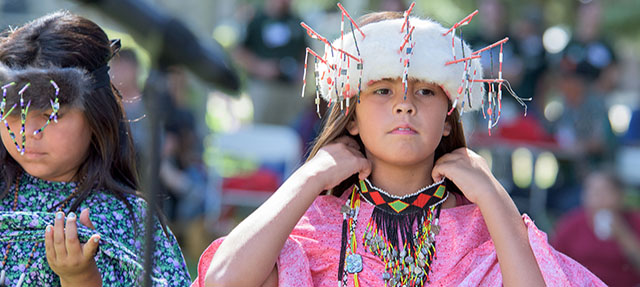California is home to 109 federally recognized tribes—more than any other state—and several more are petitioning for federal recognition. The US Environmental Protection Agency (USEPA) is responsible for regulating water quality on tribal lands, while the State Water Board regulates water quality for other water systems. According to USEPA’s ECHO database, 88 tribal water systems in California serve more than 160,000 people.
Unfortunately, some Native American communities lack access to safe drinking water. Federal agencies, not states, have traditionally been funding partners, but as part of its commitment to ensure safe drinking water for all Californians, the state is now poised to partner with tribes to address this important public health challenge.
Over the past year, the State Water Board assessed whether California’s water systems are providing safe and affordable drinking water, including those on tribal lands. Its recently released Drinking Water Needs Assessment found that 13 tribal water systems are currently in violation of state and federal drinking water standards, and 22 systems are at risk of violating standards in the future—roughly similar to the rates of problems among other small water systems in California. These statistics did not include domestic wells, some of which face water quality challenges in addition to the risk of drying up during a drought.
What steps could ensure Native Americans’ access to safe water? A variety of federal agencies—including the Indian Health Service, US EPA, and the US Department of Agriculture—play a key role in supporting tribes in California and across the country: they provide grants, technical expertise, and training. A recent report on clean water access for tribes in the Colorado River Basin examined federal water programs and identified limitations. One takeaway is that more funding is needed.
“A primary reason the need for new or improved tribal drinking water infrastructure is so great is because of the difficulties tribes face in operating and maintaining those facilities in a financially sustainable way,” says Jonathan Rash, Deputy Director of the Division of Sanitation Facilities Construction at the California Area Indian Health Service.
“Most tribal drinking water systems have a limited customer base, often with limited financial means. The cost to maintain drinking water systems properly is often prohibitively high on a per-home basis.” Rash says that tribes usually don’t desire regionalization, however. “They tend to have a strong preference to have sovereign control over their water resources.”
The financial barriers mean that preventative maintenance is often deferred. Because of this, Rash says, it becomes difficult to retain qualified operators, levels of service suffer, and drinking water facilities deteriorate faster. “There exist numerous programs to help tribal drinking water systems rebuild or replace failed infrastructure,” says Rash, “but no programs to help with these chronic hurdles to financially sustainable operation and maintenance.”
While the state is not responsible for regulating water quality on tribal lands, Native American communities can access some state funding. For example, the Safe and Affordable Funding for Equity and Resilience (SAFER) program, created in 2019, provides communities with resources to help small systems address violations of drinking water standards—solutions include improved water treatment, new water sources, and consolidation with neighboring water systems.
One big challenge is connecting tribes to such programs. The state has begun concerted outreach to tribal communities this year to discuss how the SAFER program could help improve troubled water systems, and to gather more information on the challenges tribes are facing.
“Since the creation of the SAFER program, we have begun direct engagement with tribal water systems who are currently not providing safe drinking water,” says Laurel Firestone, a member of the State Water Resources Control Board. “In order to better integrate tribal drinking water needs into our Needs Assessment, we have partnered with US EPA, Indian Health Services, Rural Community Assistance Corporation, and the Department of Water Resources to host a series of workshops to build stronger partnerships with tribes and to discuss how to best address this tribal water system data gap.”
These are important first steps. Clean water access on tribal lands is one crucial way that California can achieve its goal of ensuring “every human being has the right to safe, clean, affordable, and accessible water.” As Firestone puts it, “partnerships with tribes and tribal communities are a vital part of realizing the human right to water here in California.”






